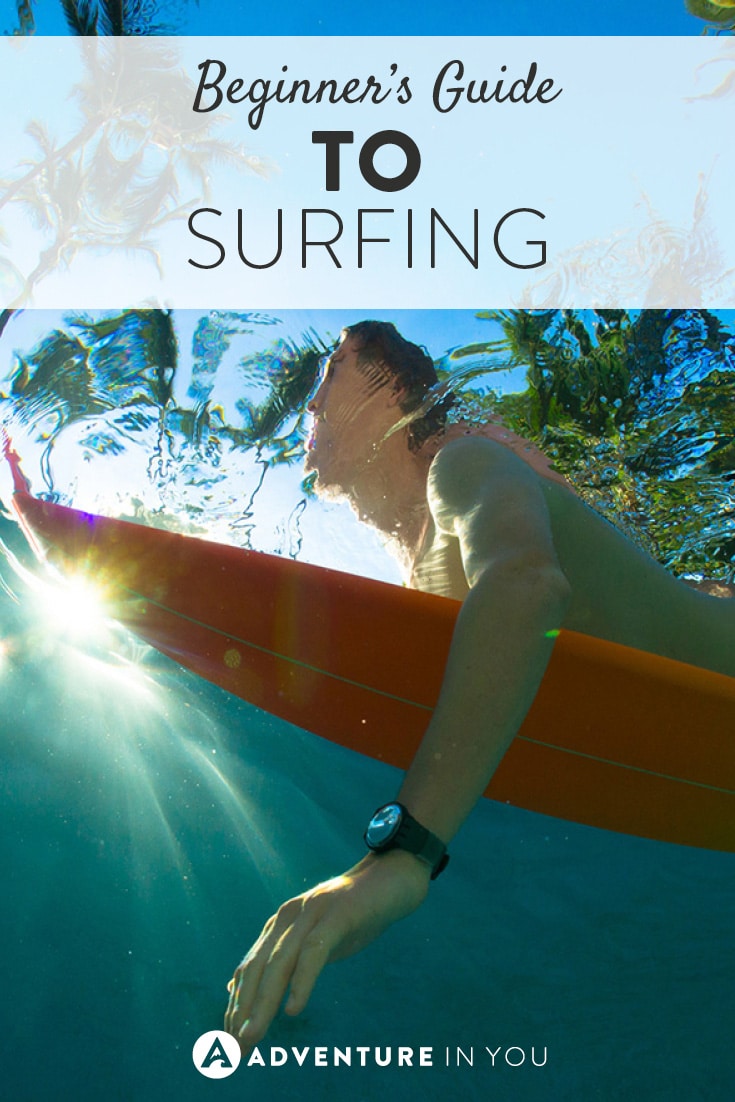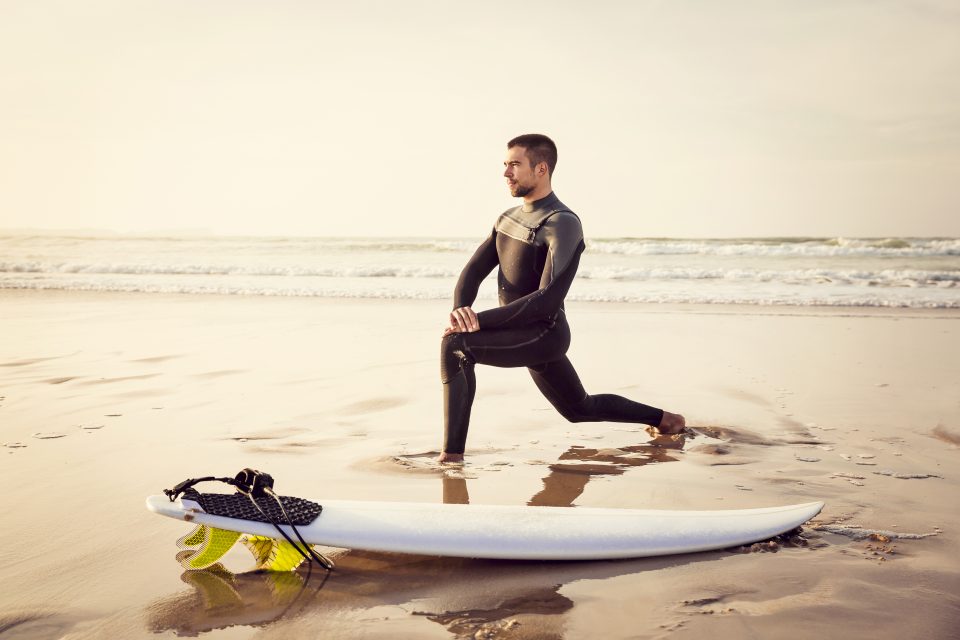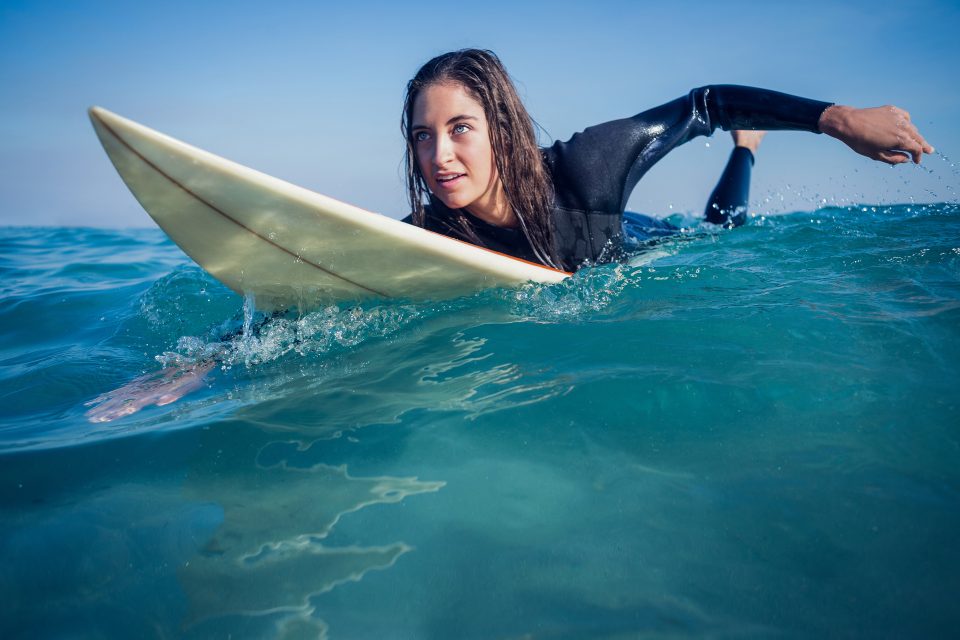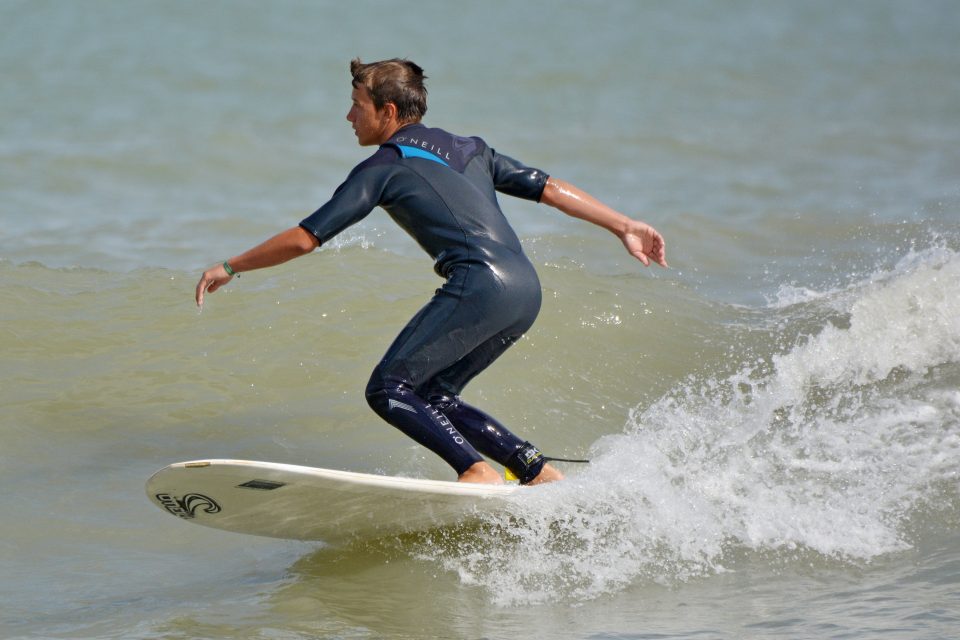So you want to be a surfer? This beginner’s guide to surfing is the best place to start. This article covers all the basics from surf lingo, surf etiquette all the way to how to stand up for the first time. Naturally, no matter how many times you read this article, you won’t actually learn how to surf until you try it yourself. Learning how to surf is a fun and challenging journey and there are some people that swear that there is no better feeling than being out on the water, surfing perfect waves. Before you can understand or disagree with that statement read this, paddle out and find out for yourself.
View Contents
Basic Surf Lingo
First things first, you need to be able to communicate with other fellow surfers, whether it’s to ask for advice or just to say hey. Give these a quick read over so you don’t embarrass yourself while out in the water.
In surfers lingo, the word “Dude” can be used to describe almost anything!
For example, when looking at a girl, you can say “Dude check that out” or someone dropped in on your wave wave, you can say, “Duuuuudeee”. When saying hello, you can use it by saying “Sup dude?”.
How surfers say hello – “Sup dude”, “Hey man”, “Howzit, brah?”
How surfers describe their feelings after riding an awesome wave – “I was so stoked dude”, “That was sick”, “That was bitchin'”, “Did you see that shit? It was unreal!”
How surfers describe good waves – “It’s clean out there”, “Epic”
How surfers describe shit waves – “It’s blown out”, “They are all closing out”
How surfers might describe you if you are getting in the way and not following surf etiquette– “What a barney!”, “You can tell he/she is a benny”
When unsure what others are saying, just smile, and say the words “yeah dude” and hope you didn’t just sign away your life.
Read: What Kind of Traveler Are You?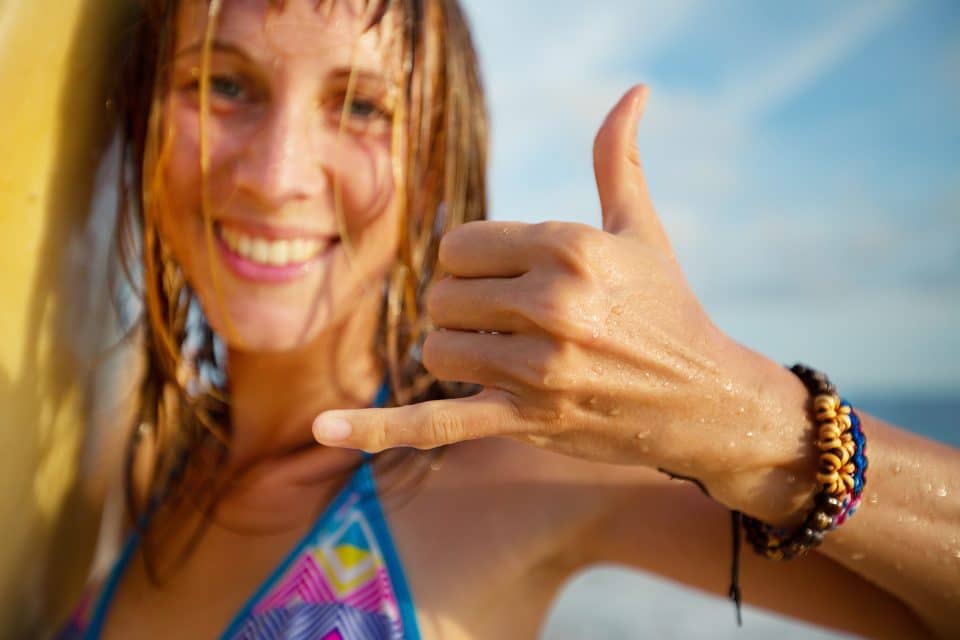
✨The 1 Thing We Never Leave Home Without…✨

Coming from someone who has been traveling the world for the last 8 years AND has been in the hospital 2x, travel insurance is something everyone NEEDS to get. Get a quote below!
Basic Surf Etiquette Rules – Don’t be a Dick!
Know the Right of Way
You have right to the wave if you are:
Furthest inside: you are the closest surfer to the peak of the breaking wave
Furthest out: you are furthest out or the one that has been waiting the longest
First to feet or to catch the wave- Self explanatory
Don’t Drop In
Cutting in front of other surfers who are up and riding is a no no. Just don’t do it. Follow rule number 1 and you will be fine.
Don’t Snake
Snaking someone is when you repeatedly paddle around someone to get into the inside position on a wave. Trust me, no one likes a snake.
Respect the Locals
Keep in mind that the locals surf this spot every day so show respect. Be polite, don’t be cocky, and try to make friends. Surfers are some of the friendliest and easy going people in the world. Be nice to the locals and you might even find yourself in a random beach bbq after a solid surf session.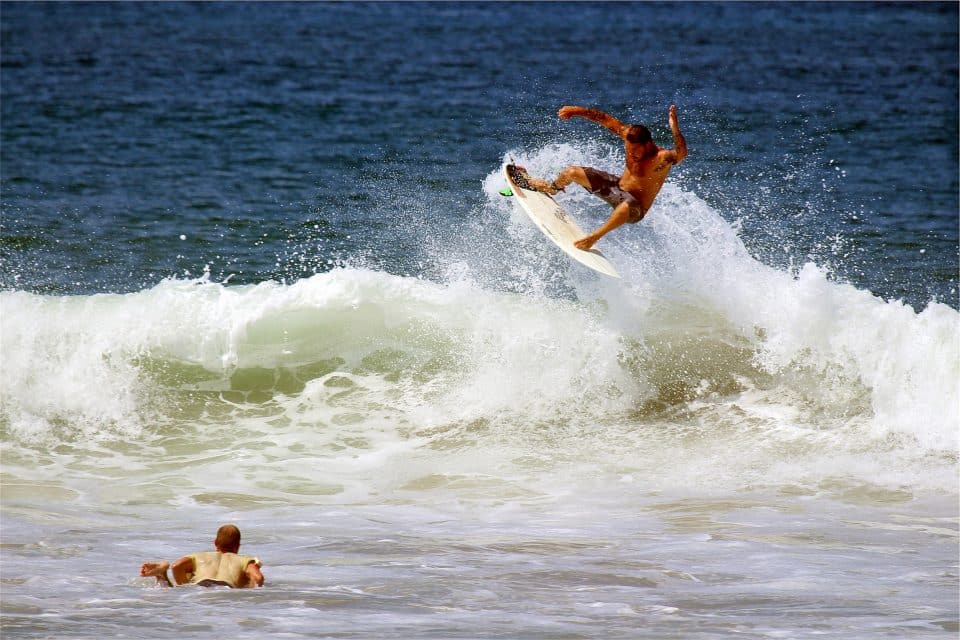
Surf Spots that Suit your Ability
Especially when you are beginner, try to pick a spot that is away from the big breaks and main line up. Honestly you probably won’t be able to paddle to this point anyway and even if you can, you don’t want to be there. Practise in the white water first. There is nothing wrong with that. You are only putting yourself and others in harm by trying to surf waves that are beyond your ability.
Read: The 10 Best Surf Spots in Bali
Respect the Beach
As a surfer whose playground is the ocean, be a responsible beach goer. Dispose of your trash properly. Pick up trash if you see some and leave nothing but footprints.
Surfers Don’t Bite (Sharks do)
With that being said, apologise if you accidentally drop in on someone or breach the basic etiquette rules above. A quick sorry will go a long way when you’re out in the ocean. 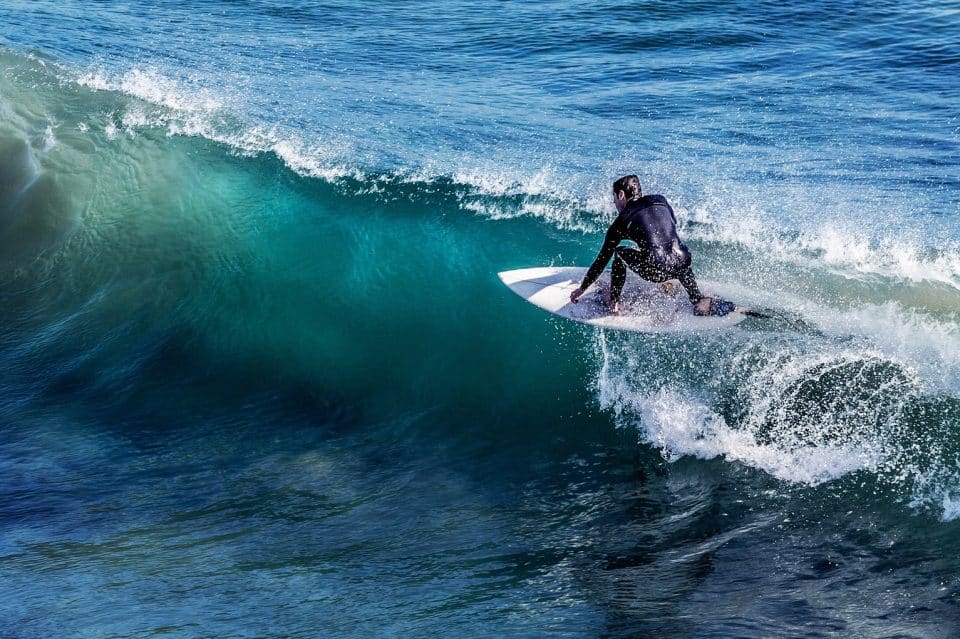
Surf Gear – How to Pick your First Board
Once you get some experience, there are many different things you have to consider when choosing a surfboard but for your first time, simply put – get a big one! Obviously, there is more to it that that but. for starters, pick a surfboard bigger than 9 ft and with a rounded nose. If you are feeling slightly confident opt for a hard board, if not go for a foamy. A foamy is great for first timers so don’t be ashamed of using one. Moving forward, the board size you choose will be largely dependent on your skills. Slowly work your way down board sizes- if you want to! There are loads of awesome long boarders out there that are killing it in their big boards.
Related: Surfing in Olon, Ecuador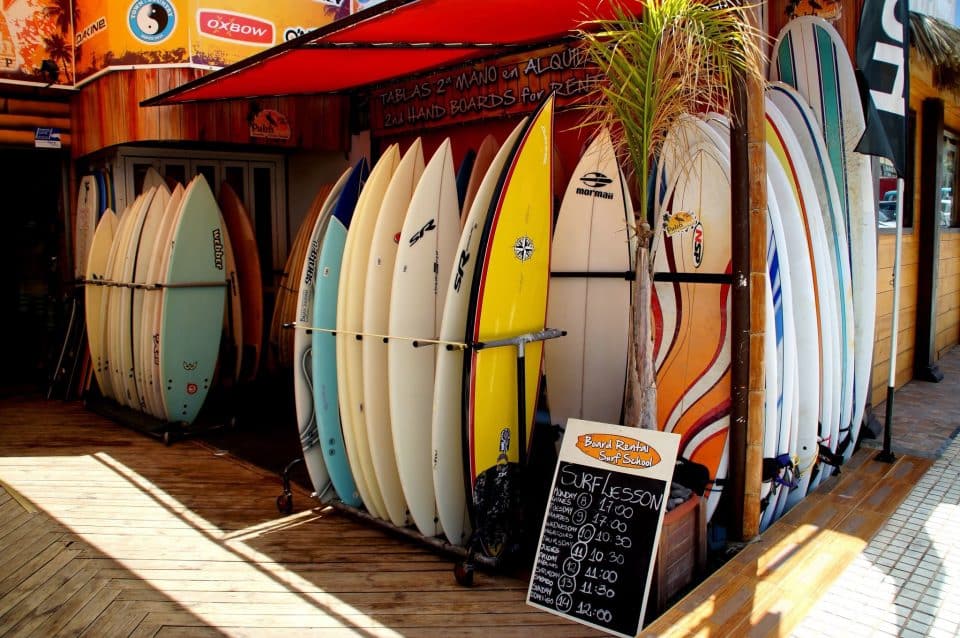
Psst...Want in on a Secret? 🤫

We've scoured the internet for the best ALL-AROUND travel shoe and Tropicfeel wins by far. We've taken ours through rivers, jungles, and cities and they're still alive and kickin'. Check them out below.
Surfing Warm Up and Cool Down Tips
A top tip for anyone thinking of surfing is don’t underestimate how valuable it is to spend 5 minutes warming up/stretch before paddling out and 5 minutes after. Do some basic full body stretches and you will greatly lower the chance of injury. You can thank me the next day, when you are only half as sore.
Tips for Paddling Out
First tip -don’t attempt to “duck dive”. Beginners hear this phrase, learn what it is and then immediately think they have to learn it. You won’t need to in the early days as you will be spending most of your time in the white water. Plus it pretty impossible to successfully “duck dive” in a 9ft plus surfboard. Instead practice “turtle rolling” and your paddling position.
Your position on the surfboard should cause the nose to slightly be raised above the sea surface and allow you to easily dig your arms deep into the water when paddling. When you have your position fixed, start a free style swimming motion and dig your arms deep into the water. Most surfing beginners make the mistake of only putting half their arms in the water and not fully exerting effort, which only makes paddling harder. Keep your head up, look where you are going and if you want to go faster bend your legs (bring your feet towards your butt) to change the weight distribution. When you see a wave is about to hit you decide if you should turtle roll (for big waves) or paddle hard and charge it (for smaller waves or waves that won’t break before hitting you).
How to Catch that First Wave
Well done so far. You learned how to talk like a surfer, you chose a surfboard and paddled out successfully. The next step catching your first wave!
Usually on your first time, you will be trying to catch white water so wait till you see a big wave that has already crashed coming right at you. Turn your board nose to face the beach, make sure you are on your board and when the wave is around 5 seconds away from you, start paddling towards the beach… Paddle hard. Commit, lean forward and when you feel the wave has hit you, grab both sides of your board and hang on.
Then…you “Pop”
If you nose dive, repeat the above step but move your position back ever so slightly to lower the weight on the front. If the wave has taken you quickly, don’t be afraid to pop up.
I would advise practicing the pop up first on the beach before paddling out and after you have warmed up/stretched. Do these steps;
- Start by lying straight and flat on your stomach.
- Place your hands up by your chest (like a press-up), board width apart.
- In one flowing movement, “pop” or “snap” (as some people call it) up to a crouched standing position as quickly as you can. Do this by pushing yourself upwards and bringing your legs under your body.
Practice this a few times on the beach. If you are struggling at this point or when trying it on a wave change the last step.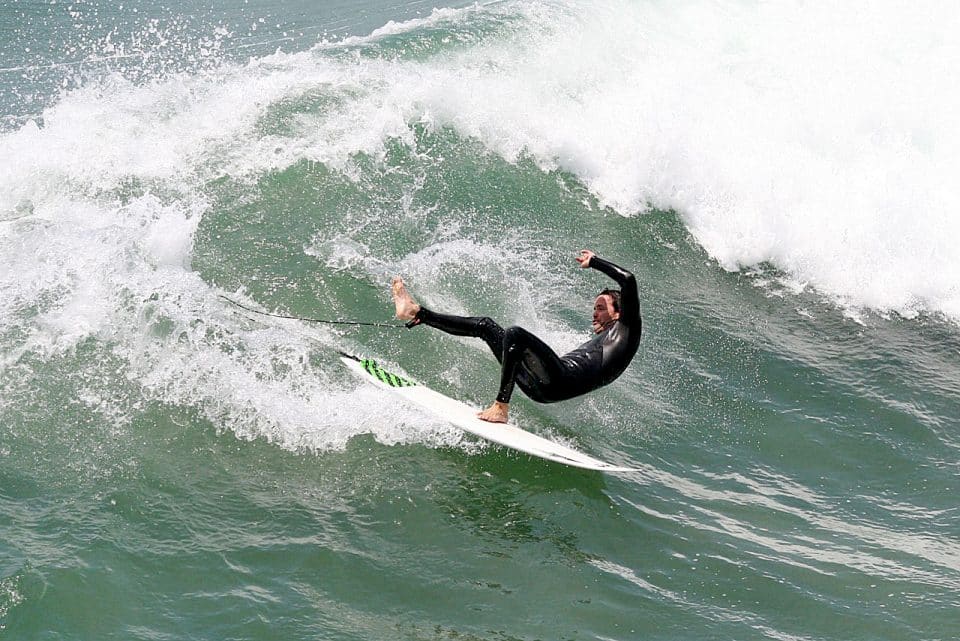
Do It Over and Over Again
You know what everyone says, “Practice makes perfect”. It will take you hours and thousands of wipe outs and nose dives, before you start carving waves. When you get to this point though you won’t look back, only forward – you will be hooked.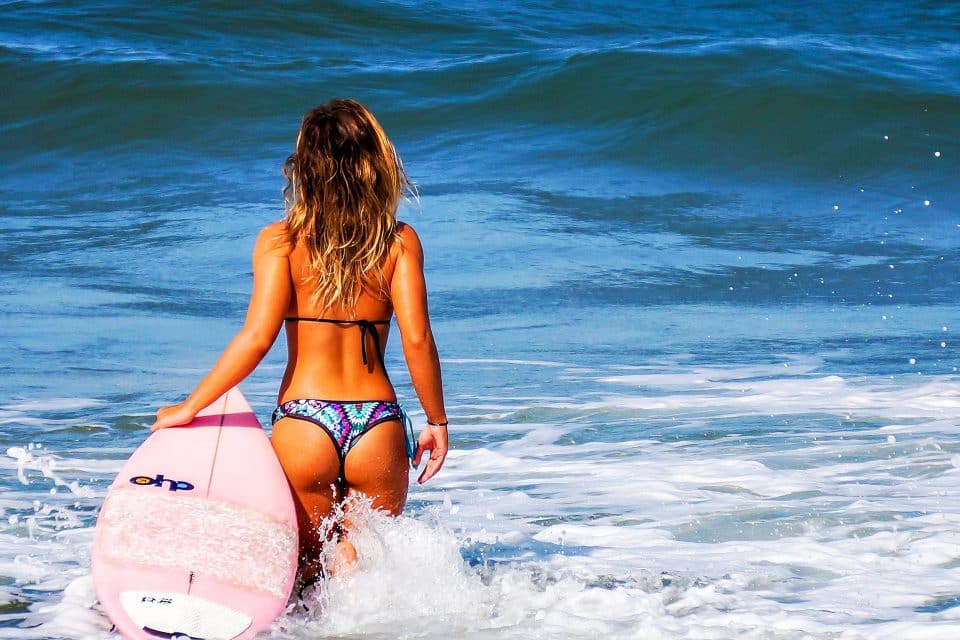
Lastly, paddle out, surfs up and enjoy!
Looking for more surfing inspiration? Check out these other articles
- Awesome Surfing in Medewi Bali
- Best Surfing Spots in Southeast Asia
- Best places to go surfing in Hawaii
Inspired? Pin it!
